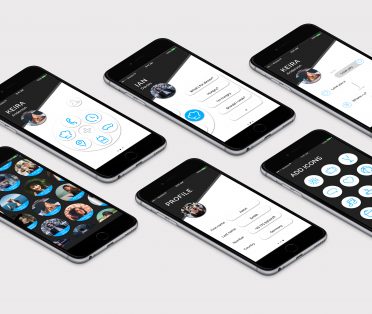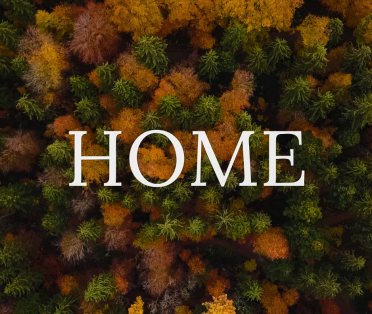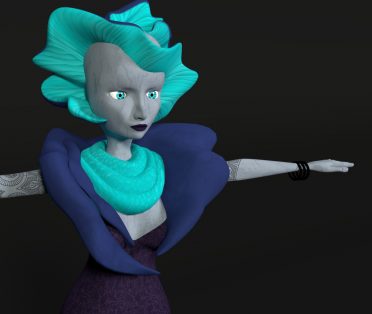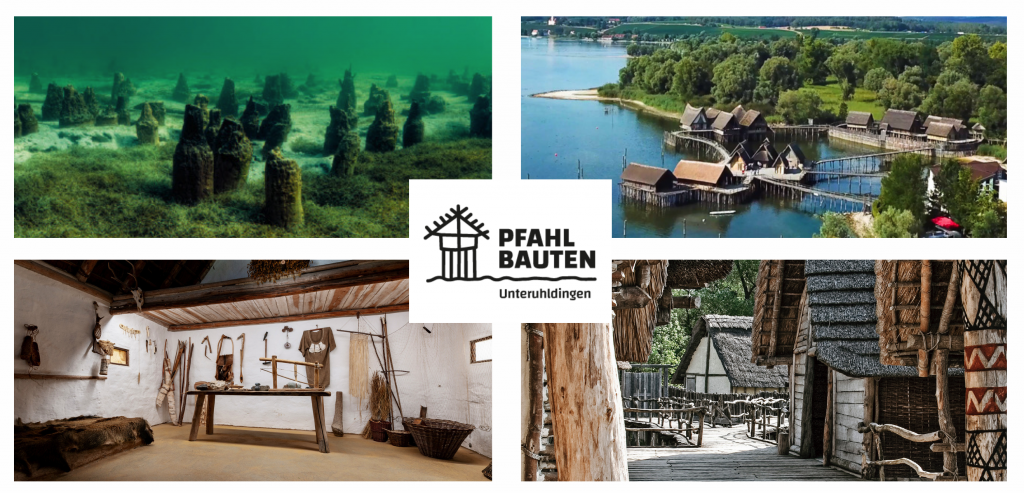
Augmented Reality Pile Dwelling – interactive experience
For this project, I explored a new technology to investigate the potential uses of augmented reality for knowledge transfer in museums. With Augmented Reality (AR), museums can reach a whole new level of interaction and help visitors discover the world in a new way.
A very exciting topic here is the reconstruction of historical events. Therefore, I developed an application that deals with Stone Age pile dwellings from the Pile Dwelling Museum in Unteruhldingen at the Lake of Constance. The visitors can see the reconstruction of a pile dwelling in original size by 3-D animations and this is explained supporting with virtual info points.
Why Augmented Reality in this context?
With AR, the focus is not on complete immersion in a virtual world, but on authentic augmentation of the real world. The linking of the real world with the virtual world not only helps to better understand learning content; immersive experience also proves conducive to long-term storage of learning content.
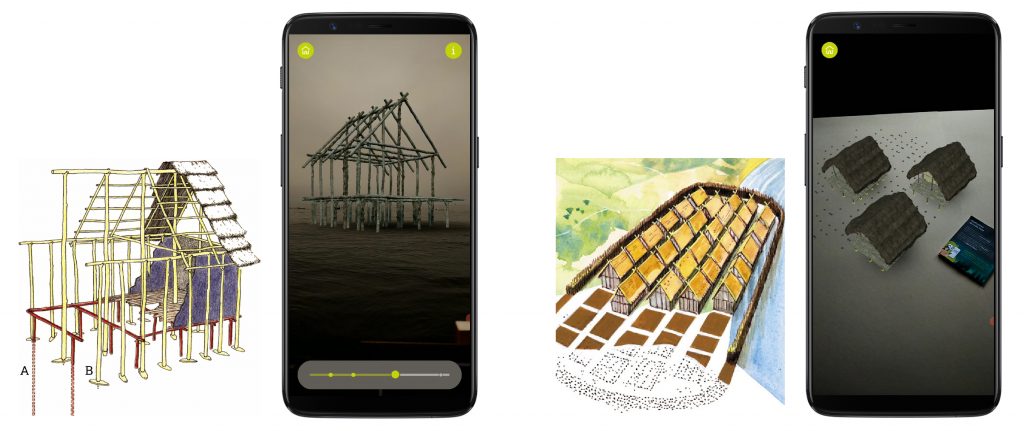
GOAL
Overall, users of the application should be introduced to historical content interactively without exposing them to a flood of information, effects, and models. The main station (reconstruction) is to be seen as an extension of the original replicas in the museum.
The prototype takes up the following areas:
– Reconstruction of a pile dwelling
– Discovery of a pile field (in the museum or at home)
PROCESS
The prototype consists of the conception, design and development of an interactive augmented reality application.
![]()
Qualitative interview
In order to deepen my own research and to gather important information, a qualitative interview was conducted with the museum director, Prof. Dr. Gunter Schöbel.
I structured the questions that came up in my research into an interview script. This helped to conduct a fluid interview to gain insight into the desires, facts and needs at the museum.
The typical visitors are families and retirees, although the category of tourist can also be noted. There is a noticeable gap in the age group between 18 and 25. Since the museum has so far focused primarily on children as a target group, the museum’s appeal to young adults can be further expanded.
AR technologies can attract younger generations and encourage them to visit museums and galleries, as they offer a completely new learning experience that appeals especially to technology-savvy individuals.
![]()

Visualization of a three-dimensional object
Most of the time, two-dimensional information is used to convey knowledge in museums. Humans are spatial creatures, and some things are easier to understand in three dimensions.
For this purpose, a 3-D-modeled pile-dwelling house was designed in the 3-D software Autodesk Maya based on construction images. A realistic and appealing design should support the knowledge transfer, so that the visitors have the feeling to stand directly in front of a pile dwelling house, which stands between the others in the water.
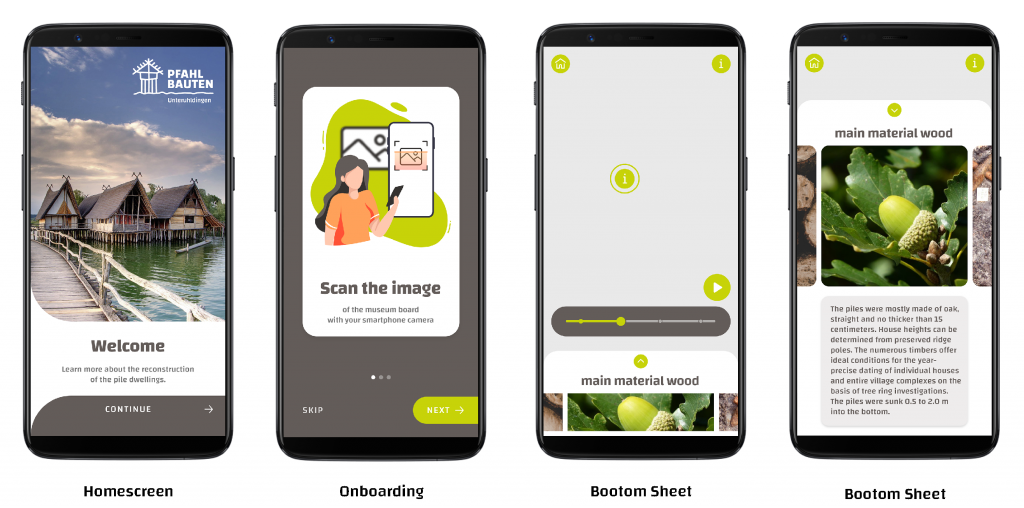
User Interface
At the beginning of each station, short introductions should briefly summarize the goal of each topic to the user and at the same time facilitate the entry into the AR area.
The design of the interface presented a challenge for the mobile AR view. A flat design is essential for unrestricted interaction. At the same time, a reduced interface is to be achieved in order not to block users‘ camera view of virtual objects. In addition to the structure, the user interface (UI) should appear serious, be associated with the museum and also appeal to a young audience.
Bringing objects to life through interactive animations
Traditional exhibit design sometimes fails to convey the full complexity of an object.
Interactive animations can bring static exhibits to life and let them tell their own story without changing the physical piece.
Previously, reconstruction in the museum was only depicted in two dimensions, without visualizing the construction process. Through the animations in the AR application, the construction of a house can be realistically recreated as it gradually emerges in front of the user’s eyes. In addition, the user can interactively influence the construction through an integrated slider.
![]()
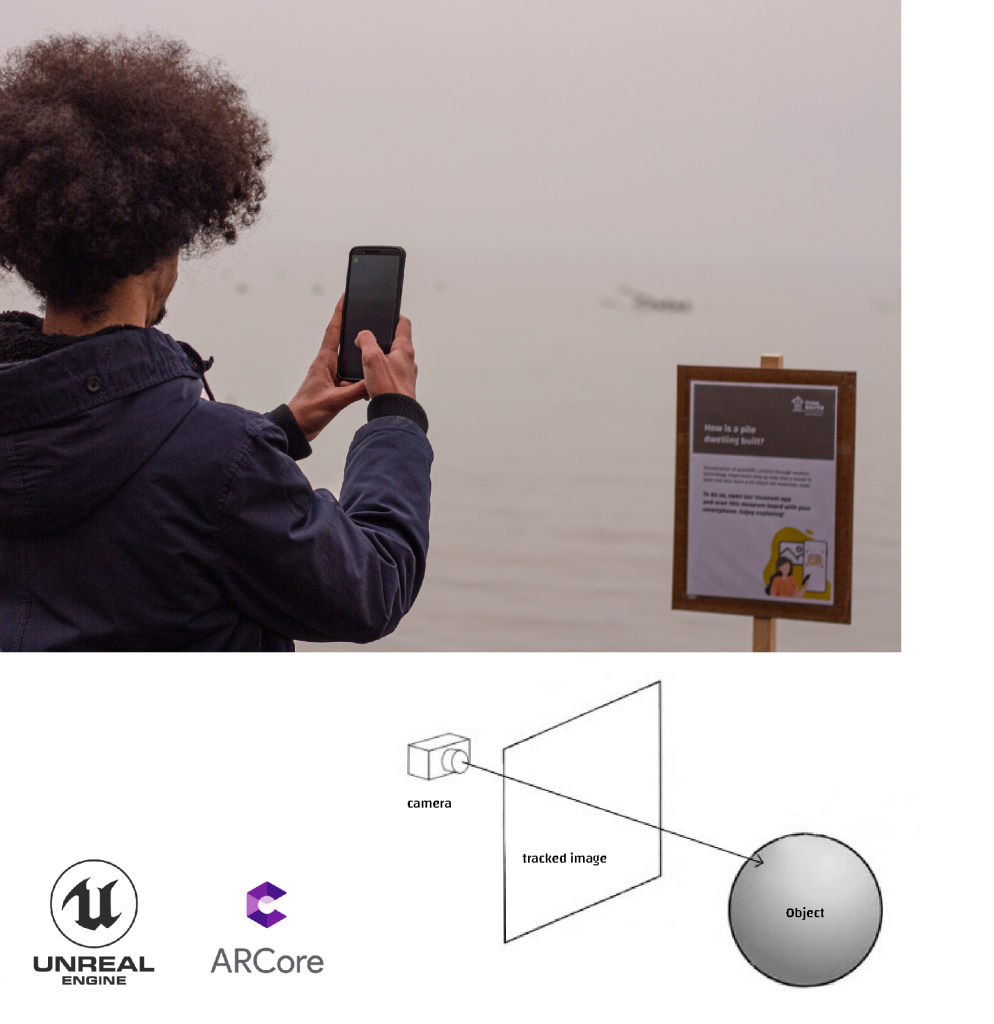
Development
The application development took place in Unreal Engine 4 and was developed exclusively for Android smartphones with ARCore. The placement technique is done with the help of marker position: users receive corresponding AR content after scanning information boards of the museum with the device camera.
Through the technique known as image tracking, the position of the virtual 3-D object was defined relative to the marker position. Thus, to display the object at a certain distance behind the info board, the transformation had to be manually stored in the program code.
![]()

RESULT
Since a certain group among potential users, the young adults, should be addressed with a novel application in the museum, I conducted usability tests on the basis of my prototype with user survey preferentially with this target group.
I received positive feedback that the positioning of the UI elements was easily accessible for the user and thus easy to use.
Furthermore, I was able to successfully observe how well the user finds his way around without verbal instructions. This aspect was very crucial to check the effect of the tutorials and the handling of AR.
I would like to take this opportunity to thank the Pile Dwelling Museum for the very good cooperation. The interview helped me a lot with the requirements analysis and the museum also provided me with extensive material.
Sources: www.gruenes-archiv.de | https://www.museum-fischerhaus.de/das-pfahlbauhaus | https://commons.wikimedia.org/wiki/File:D-BW-Unteruhldingen-Pfahlbauten-Detail_Wand.jpg | http://sonius.at/journal/2018/unser | www.pfahlbauten.de | www.bodensee.eu/de/was-erleben/uebersichtskarte/unesco-fundstelle-hornstaad-h%C3%B6rnle_poi1470 (State Office for the Preservation of Historical Monuments)

